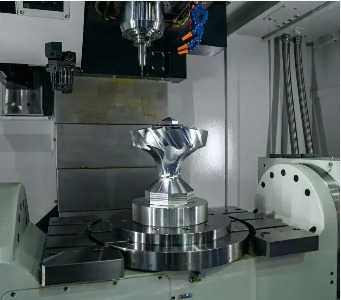Exploring the Benefits of CNC with Rotary Axis in Machine Manufacturing
In the realm of advanced manufacturing, the integration of CNC with rotary axis technology represents a significant leap forward. This innovative approach, often referred to as Rotary Axis Machining, is transforming how machine manufacturers achieve precision and efficiency in their operations. By delving into the benefits of CNC rotary axis machines, it becomes clear why this technology is becoming a staple in modern manufacturing environments.
Enhanced Precision and Complexity
One of the primary advantages of Rotary Axis Machining is its ability to enhance precision. Traditional CNC machines are limited to operations on a single plane, but incorporating a rotary axis CNC machine introduces additional rotational movements. This integration allows for multi-axis cutting and milling, which is crucial for producing complex geometries and intricate parts with high accuracy. With the use of a rotary cutter machine, manufacturers can achieve tight tolerances and detailed features that would be challenging or impossible with conventional setups.
Increased Efficiency and Productivity
CNC rotary axis machines significantly boost manufacturing efficiency. The ability to perform multiple operations in a single setup reduces the need for manual repositioning of the workpiece, which saves time and minimizes errors. Axis CNC cutting capabilities allow for continuous processing without the interruptions typically associated with changing tools or fixtures. This seamless operation translates into faster production cycles and higher throughput, making it an attractive option for manufacturers aiming to meet high demand and tight deadlines.
Versatility in Applications
The versatility offered by CNC with rotary axis technology is another key benefit. This approach allows for the machining of a diverse range of materials and components, from simple brackets to complex aerospace parts. By utilizing advanced rotary axis cutting tools, manufacturers can handle various materials, including metals, plastics, and composites, with ease. This flexibility makes Rotary Axis Machining ideal for industries that require adaptability and precision in their manufacturing processes.
Improved Surface Finish and Quality
The integration of a rotary axis CNC machine contributes to superior surface finishes. The ability to access multiple angles and perform continuous cutting reduces the need for secondary operations and manual finishing. The precision of Rotary Axis Machining ensures that parts come out with a high-quality surface finish directly from the machine. This reduction in post-processing not only enhances the overall quality of the final product but also reduces labor costs associated with manual finishing.
Streamlined Workflow and Reduced Setup Time
CNC rotary axis machines streamline workflows by consolidating multiple machining steps into a single setup. This integration eliminates the need for multiple machines and manual handling, resulting in a more efficient production process. The reduced setup time associated with CNC with rotary axis systems also minimizes downtime and accelerates production schedules. As a result, manufacturers can respond more quickly to changing demands and optimize their production lines.
Advanced Technological Integration
Modern rotary axis CNC machines are equipped with sophisticated control systems and software that enhance their functionality. These systems allow for precise programming and real-time adjustments, further improving the accuracy and efficiency of the machining process. The ability to incorporate advanced technology into Rotary Axis Machining makes it possible to achieve high levels of automation and integration, leading to more efficient and reliable manufacturing operations.
Conclusion
In summary, the benefits of incorporating CNC with rotary axis technology into machine manufacturing are substantial. From enhanced precision and efficiency to improved versatility and surface quality, this approach represents a significant advancement in manufacturing capabilities. By leveraging Rotary Axis Machining and its associated technologies, manufacturers can achieve superior results and stay competitive in an increasingly demanding industry. As machine manufacturers continue to embrace these innovations, the potential for achieving new levels of precision and productivity in manufacturing is limitless.




